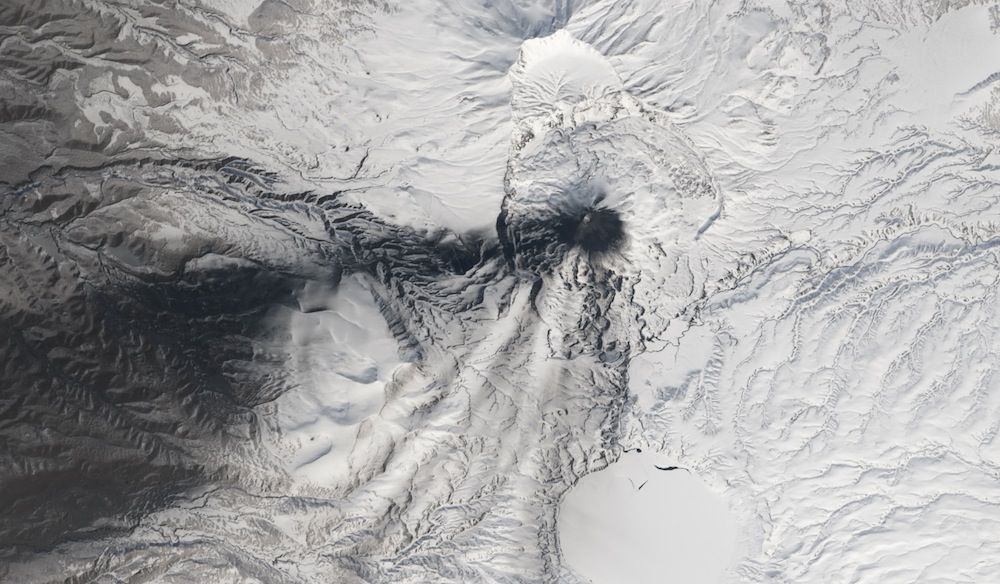5 Erupting Volcanoes Seen from Space (Photo)

There are 40 active volcanoes on Russia's icy Kamchatka Peninsula. On Monday, a passing satellite saw five of them erupting at once.
Landsat 8 captured images of the five smoky calderas on April 14, according to NASA's Earth Observatory. The satellite is eighth in a series that have been providing continuous Earth data from orbit for 40 years. Its Operational Land Imager (ORI), which takes snapshots of the planet's surface in visible, near infrared and short-wave infrared spectrums, captured the volcano images.
The five volcanoes are all cone-shaped stratovolcanos: Shiveluch, Klyuchevskaya, Bezymianny, Kizimen and Karymsky. The Kamchatkan Volcanic Eruption Response Team (KVERT) reported that between March 28 and April 4, Shiveluch's lava dome began to swell like toothpaste squeezing out of a tube. This extrusion brought with it ash explosions and hot avalanches, among other tectonic activity. [See Images of the Erupting Kamchatka Volcanoes]
Klyuchevskaya, the tallest of the five, experienced an explosive eruption in December 2013, and continues to belch gas and steam, according to KVERT. Bezymianny is spewing gas and steam, too, along with a stream of viscous lava. Kizimen shuddered in November and December of 2013, letting off some light seismic activity, and is also steaming. Karymsky, the most active of the bunch, has been letting off brief explosions (known as Vulcanian activity), as well as low-level ejections of cinder and lava (known as Strombolian activity). KVERT observed these eruptions between March 28 and April 4, and also tracked an ash plume rising as high as 8,200 feet (2.5 kilometers).
Kamchatka's volcanoes are part of the Pacific Ring of Fire, a circle of tectonic activity that stretches up the west coast of the United States and down the east coast of mainland Asia and Japan.
The seismic and volcanic activity along this border is the result of tectonic plates grinding into one another. At Kamchatka, the Pacific plate is being pushed under the Eurasian plate, a process known as subduction. Complicating the issue are two smaller chunks of Earth's crust, the Okhotsk Block and the Bering Block, that meet right over the peninsula, according to Denison University volcanologist Erik Klemetti, who blogs at Eruptions.
The tectonic activity in the region brings hot mantle rock up, creating molten magma. Under enough pressure, this magma can erupt, creating — voilà — volcanoes.
Sign up for the Live Science daily newsletter now
Get the world’s most fascinating discoveries delivered straight to your inbox.
Kamchatka is relatively remote, but ash from eruptions on the peninsula has the potential to disrupt air travel.
Follow Stephanie Pappas on Twitter and Google+. Follow us @livescience, Facebook & Google+. Original article on Live Science.

Stephanie Pappas is a contributing writer for Live Science, covering topics ranging from geoscience to archaeology to the human brain and behavior. She was previously a senior writer for Live Science but is now a freelancer based in Denver, Colorado, and regularly contributes to Scientific American and The Monitor, the monthly magazine of the American Psychological Association. Stephanie received a bachelor's degree in psychology from the University of South Carolina and a graduate certificate in science communication from the University of California, Santa Cruz.